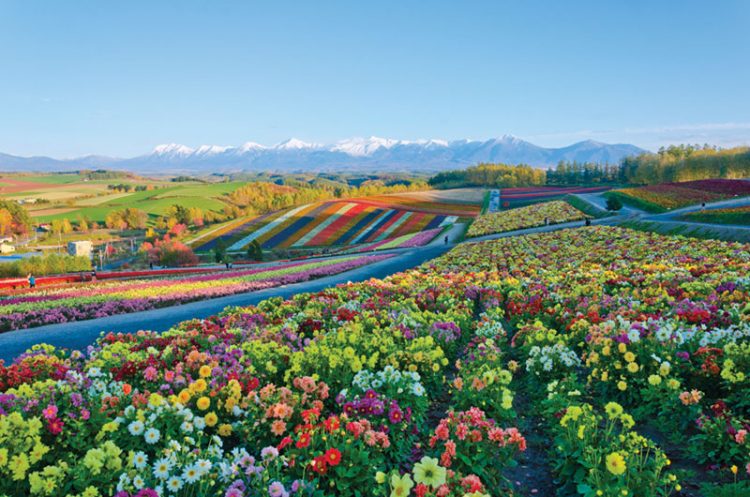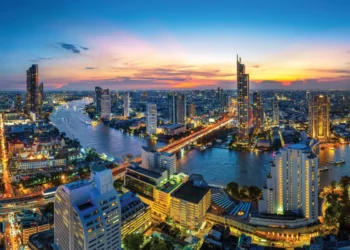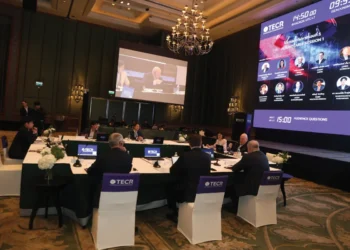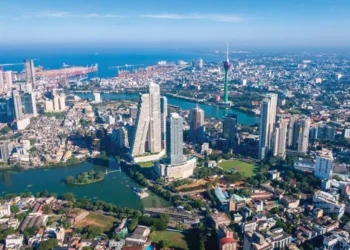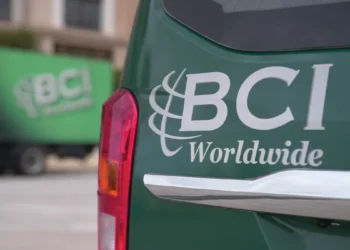IAG takes a look at recent developments in Hokkaido which may be positioned to rejoin Japan’s regional IR race following delays to the national development schedule as a result of COVID-19.
A year has passed since Hokkaido pulled out of Japan’s IR race. On 29 November 2019, Hokkaido’s governor announced that the prefecture once thought to hold the most potential for a regional IR would no longer be pursuing a license. At the time, Governor Naomichi Suzuki claimed what while he, “wanted to pursue an IR bid,” after careful consideration he would, “shelve the idea of a regional IR certification application.” For all intents and purposes, Hokkaido is out of Japan’s IR race.
The primary reason given for this withdrawal was that an environmental assessment study – deemed a requirement before launching any bid – would take two to three years. The candidate area was the Uenae district of Tomakomai city, located near Shinchitose Airport in Chitose city. A large 1,000 hectare plot of land was earmarked within which the project could be located, but Governor Suzuki determined, “There is a high possibility that the candidate location serves as a habitat for rare animals and with the limited time allotted it would be impossible to take the appropriate environmental considerations.”
 At the same time, the governor has recognized the estimates of an investment of between JPY280 billion and JPY380 billion (US$2.69 billion to US$3.65 billion) at the time of opening and overall annual sales of JPY160 billion (US$1.54 billion). With Hokkaido’s diminishing economy and depopulation among other concerns, the governor has also hinted at a possible future, stating, “IR is a project that will have a continuous contribution, having a great impact on our economy and society. We will continue to prepare ourselves so that we can take on such a challenge when the time is right.”
At the same time, the governor has recognized the estimates of an investment of between JPY280 billion and JPY380 billion (US$2.69 billion to US$3.65 billion) at the time of opening and overall annual sales of JPY160 billion (US$1.54 billion). With Hokkaido’s diminishing economy and depopulation among other concerns, the governor has also hinted at a possible future, stating, “IR is a project that will have a continuous contribution, having a great impact on our economy and society. We will continue to prepare ourselves so that we can take on such a challenge when the time is right.”
DOUBLE WHAMMY
It wasn’t long after Governor Suzuki made this statement that the COVID-19 pandemic and an IR-related scandal took top billings, further delaying Japan’s IR development plans. Of course, these issues are not unique to Hokkaido with every local government battling similar issues.
The national government has still been pushing IR development, which they believe is one of the keys to the country’s growth strategy. The grand claims of expected economic effects and increase in tax revenue due to growth in inbound tourism aren’t entirely misleading, but it’s no exaggeration that the COVID-19 pandemic has crushed this major premise. It is no longer Japan’s priority issue.

QUIET ACHIEVER
Amidst all these distractions, Governor Suzuki has mostly kept quiet on IRs, but broke that silence at a regular press conference on 16 October. At the press conference regarding the national government’s nine-month extension to its Basic Policy, he said, “The prefecture will carefully examine the content of the revised Basic Policy and make broad considerations regarding the possibility of specifying a candidate location, in cooperation with Tomakomai city.”
On future plans, he added, “Our position to attempt the creation of an IR unique to Hokkaido has not changed.”
This went mostly ignored by those in the industry, but the truth is that Tomakomai city and Hokkaido prefecture never gave up on the idea of pursuing an IR bid in the future and have spent most of 2020 discussing the issues that have been holding them back. The result was a dramatic move at the end of November 2020, almost a year to the date from the regretful 2019 announcement of withdrawal.
As reported by Inside Asian Gaming, a “certain understanding” was received from the Hokkaido government regarding the environmental assessment issue, setting Tomakomai up to finally resolve to actively pursue a bid. Discussions between the prefecture and city were even reported at the city’s regular council meeting.
A hopeful-sounding city official said, “The prefecture agreed with us about the designated site, just in case there were to be an IR bid and we got approval for the Uenae area. Our understanding is that progress has been made toward the bid.”
THE FRUITS OF TOMAKOMAI’S LABORS
The reason for this progress is undoubtedly the result of Tomakomai’s careful and thorough approach to resolving issues for the bid. According to a local newspaper, the environmental impact assessment report concluded that, with consideration to the land plot highlighted in the nature-rich Uenae area near New Chitose Airport, “At least 100 hectares can be secured for business.”
Among the central issues is the safety of local birds of prey, such as the northern goshawk, which is a designated national treasure. Their natural breeding was researched from March to July 2018 and led to instructions that additional research was necessary.
According to the Ministry of Environment’s “Procedures in Protection of Birds of Prey (revised),” when making considerations for goshawk protection measures it is preferable that two nesting cycles of nests must have been completed in a particular area, and that the area must have included nests where birds were actually breeding and hosting eggs, before research can be considered in any environmental impact decision. Officials say this requirement was fulfilled by the landowner between May and August of this year in the form of additional research of the birds’ home range.
 The city is now in discussions with the prefecture based on the series of environmental surveys, expert opinions and the national policy. The prefecture has also determined, “There is a possibility that the impact on animal and plant life can be avoided or reduced.”
The city is now in discussions with the prefecture based on the series of environmental surveys, expert opinions and the national policy. The prefecture has also determined, “There is a possibility that the impact on animal and plant life can be avoided or reduced.”
The prospective location covers approximately 100 hectares, is outside of the places where rare birds of prey are nesting and is within a 10-minute drive from New Chitose Airport.
There was also confirmation that in the public offering for operators, there will likely be conditions such as an implementation policy to establish roads, independent environmental measures, and “development within an area of 50 hectares.” The prospective operator will be required to conduct more detailed environmental surveys.
BACK TO THE STARTING LINE
All of this shapes as potentially very good news for supporters of an IR development in Tomakomai City. While there is currently no budget compilation in Hokkaido for an IR and the official focus is on town revitalization, starting with the ports, the region has a historical interest in IRs and plenty of simulation experience. Preparations should not be a problem.
Tomakomai’s attempt at an IR bid all started with the city’s mayoral election in 2014. Hirofumi Iwakura was the winner in that race and established the International Resort Strategy department in 2017, which saw IR operators such as Hard Rock, Mohegan, Rush Street and Clairvest set up offices on Main Street near the city hall.
Hearing the news of the governor’s decision last year, Mayor Iwakura said with disappointment, “All I can say is that it is very unfortunate. Frankly, I just have this feeling of why?”
One year later, the city appears to be resetting its position all the way back to the starting line.

WHAT’S NEXT FOR HOKKAIDO?
Will resolution of this environmental issue be enough to breathe life back into Hokkaido’s IR dream?
One IR expert in Japan commented, “I believed that the environmental assessment issue would be cleared.” However, regarding the future of a bid, he continued, “If they are to move forward [with an IR] as a means to resolve some of the regional issues such as decreasing population and employment, the most important thing is a consensus of the residents.
“We are currently in the third coronavirus wave, which makes a bid right now unrealistic, but the delayed national application period is an advantage for Hokkaido. Whether or not there is a future for IR in Hokkaido, the first step for any tourist destination has to be getting over this pandemic. Nothing is more essential than established and proven safety measures. Any IR bid announcements would come after that.”
Hokkaido is surely the biggest threat to those vying for the same regional IR license in Wakayama and Nagasaki. The future is currently clouded by the pandemic, but Hokkaido can no longer be discounted in Japan’s IR race.






